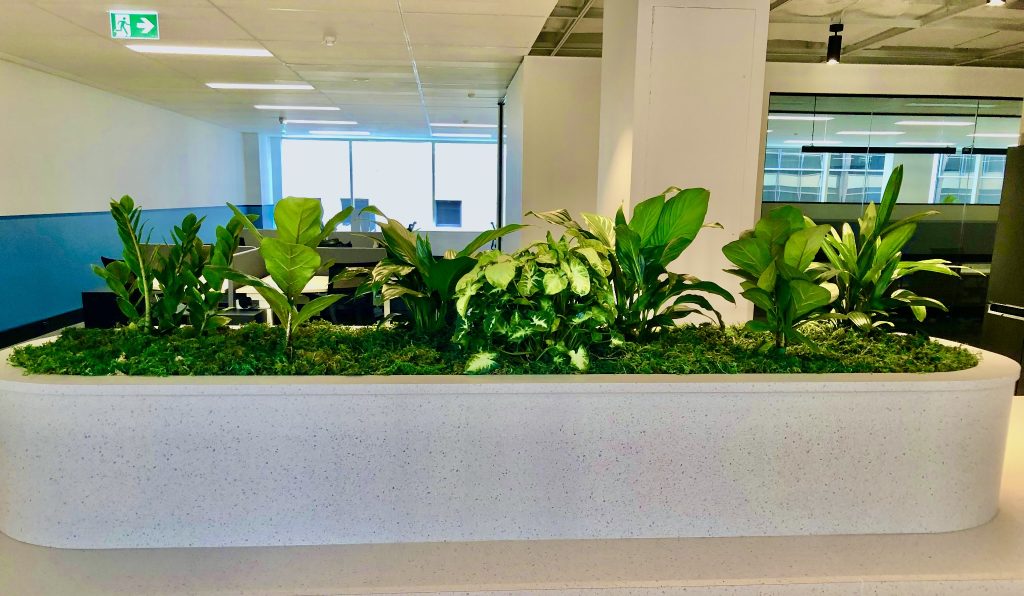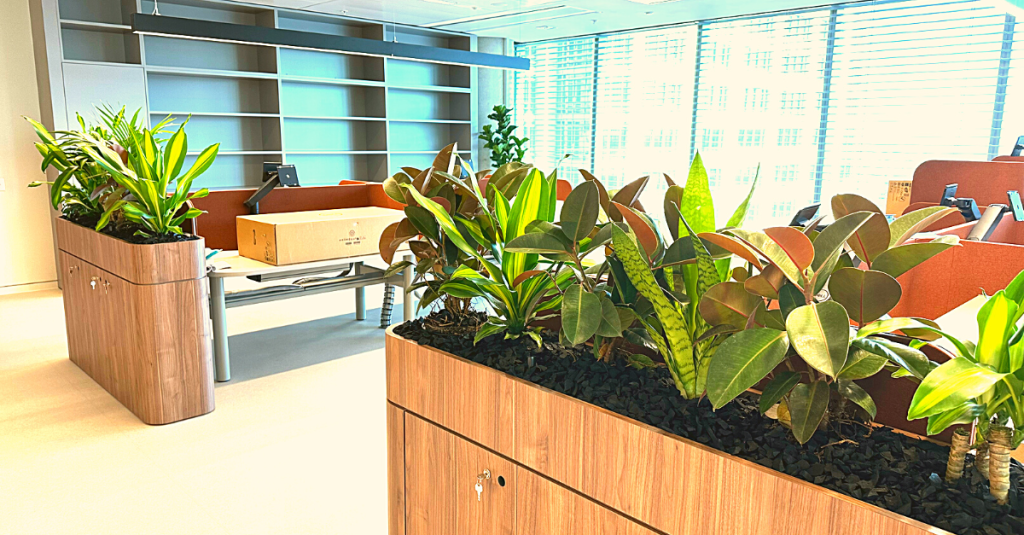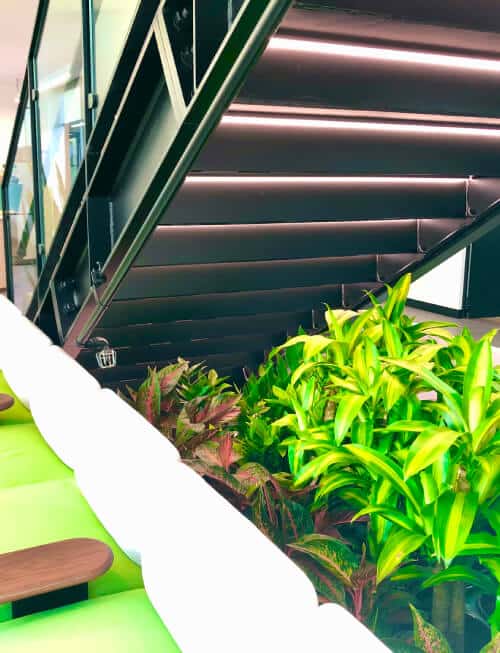Learnings
Before reading this article, it is necessary to read about Indoor Plant Terminology.
- The importance of a mulch plate
- How to incorporate a mulch plate into custom joinery
Coconut Fibre Mulch
The way to finish planting without a mulch plate is to use coconut fibre to hide all of the internal mechanics.
Disadvantages of Coconut Fibre
- Looks unappealing
- Can bread cockroaches and other bugs
- Can compress and shrink overtime especially if watered and needs consistent maintenance


Benefits of a mulch plate
- Provides a clean finish
- Allows for spacing plants apart, reducing plant numbers
- Enables sub-irrigation with wicking
- Hides mechanics
- Facilitates easy application of mulch
- Accommodates multiple plant varieties with different watering requirements
- Facilitates easy replacement of plants
- Lightweight (significantly reduces growing medium)
- Allows for quick and clean installation of plants
- Contributes to Biophilic Design
Does not require irrigation or drainage point
Setting Up A mulch Plate
Picture 1 (left) This picture shows the joinery without a mulch plate it is an open trough. We have put a pot in the joinery to give some scale to the picture

Picture 2: This picture shows the mulch plate added to the joinery with hole cutouts for the plants
Note: For a biophilic design offset the holes so there are no straight lines

Picture 3 (left) This picture shows the plants which have been placed into the holes cutout in the mulch plate

With Preserved Moss Mulch

With Recycled Rubber Mulch

Set up for Mulch Plate and Wicking















